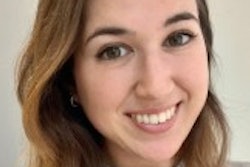Students in the city of Boston have greater access than ever to programs that assist with getting into and persisting in college, but the impact could be far greater if these programs increased their collaboration, according to a report by the Boston Foundation and the Success Boston College Completion Initiative.
 Elizabeth Pauley
Elizabeth Pauley“We believe data drives change,” said Elizabeth Pauley, associate vice president for Education to Career at the Boston Foundation, which last week released the report “Supporting Postsecondary Success: Understanding the College Access and Success Landscape in Boston.”
“Because this work is cross-sector, it is critically important for us to be using data and for us to be coordinating across those sectors to make sure that we’re finding gaps and filling them,” she added. “You need the owners of the data to come together.”
The Boston Foundation is one of the largest community foundations in the United States. Success Boston, launched in 2008, is a college-completion initiative dedicated to increasing the number of Boston public schools graduates who earn postsecondary credentials. The Boston Foundation is one of its partners.
Conducted by the University of Massachusetts Donahue Institute, Supporting Postsecondary Success breaks out information about college access and success programs by population and neighborhood served. It explored programs offered within the 58 high schools in Boston, 55 of which responded to the request for information. The research also tracked 106 programs offered by 75 community-based organizations (CBO) and institutions of higher education (IHE).
“After having been in Success Boston from the very beginning, we really wanted to understand what the ecosystem of college access and success organizations looked like,” said Pauley. “How is it changing? Are there gaps still? Was there duplication?”
Pauley noted that 10 years ago, the conversation was mostly about college access. Now it’s shifted to helping students complete their postsecondary degrees. The idea is that this report provides perspective on how to continue to increase access while also thinking about how to best equip students to succeed.
“Beginning with Success Boston, it became an articulated and intentional focus,” said Pauley.
Today, nearly every high school has some college-access programming. The data shows robust enrollment in CAS, but suggests that Latino students may be under-enrolled while African-American students are over-enrolled relative to the overall Boston public school population. Data indicated that enrollment in college access and success programs skewed female, with girls comprising 60% of enrollees.
There is an overall emphasis on first-generation college students, most commonly in areas of application support, financial aid and academic skill development. Looking at CAS, CBO and IHE collectively provided a more complete picture of the programming that exists and who is receiving it.
“The challenge and the opportunity in this space around college access and success is that it’s owned by a lot of different entities and not by any one sector,” said Pauley. “It was critically important we look at the pieces around students and families.”
Researchers indicated that while the overall picture is positive, there are weaknesses in terms of overlapping programming and shortage of programming in some areas. Programs in Roxbury, Dorchester and East Boston served the most students while programs in Chinatown, Fenway/Kenmore and Roslindale served the fewest.
“Even though we have been seeing college-going and completion rates across sub-groups, including Latinos, increase, it looks like there’s a gap in helping Latino students access support services that they may need to make a choice that’s right for them about their postsecondary path,” said Pauley. “The report notes the need for ongoing coordination.”
Pauley suggested high schools can use the report not only as a way to explore programming they can develop, but to pursue partnerships that would be beneficial to the overall mission. Also, non-profits that may want to expand higher education programming can see and address the gaps.
The report provides recommendations toward a more coordinated system. These include addressing disparities in the distribution of program resources based on geography, ethnicity, gender, age and other factors and structuring initiatives to be more effectively aligned. Also, develop structures that promote collaboration and cooperation.
“Coordination will help us ensure there aren’t gaps,” said Pauley. “We need to make sure we’re using the resources as strategically as possible.”
While there is a willingness to collaborate and coordinate, researchers urge that it become intentional. Pauley said when the stakeholders are consciously brought to the table, which the report endeavored to do, there will be results. Additionally, funders such as the Boston Foundation could help promote collaboration as a priority for grantees.
“When we publish the completion rates and the performance, that is personal to those institutions,” said Pauley. “I think they’re very open to finding new ways to work together.
“If you create the opportunity, they’ll come to it. We need to design a system that makes that the default and natural option.”
Pauley said she hopes other cities look at the report and use it as point of conversation to best serve their underserved students. She added that every city can explore how nonprofit organizations can become active participants in the education process.
“It would be helpful to know where funders should direct their dollars, where schools should direct their efforts and where the gaps are,” said Pauley. “Other cities could replicate this audit to understand what their context looks like.”















